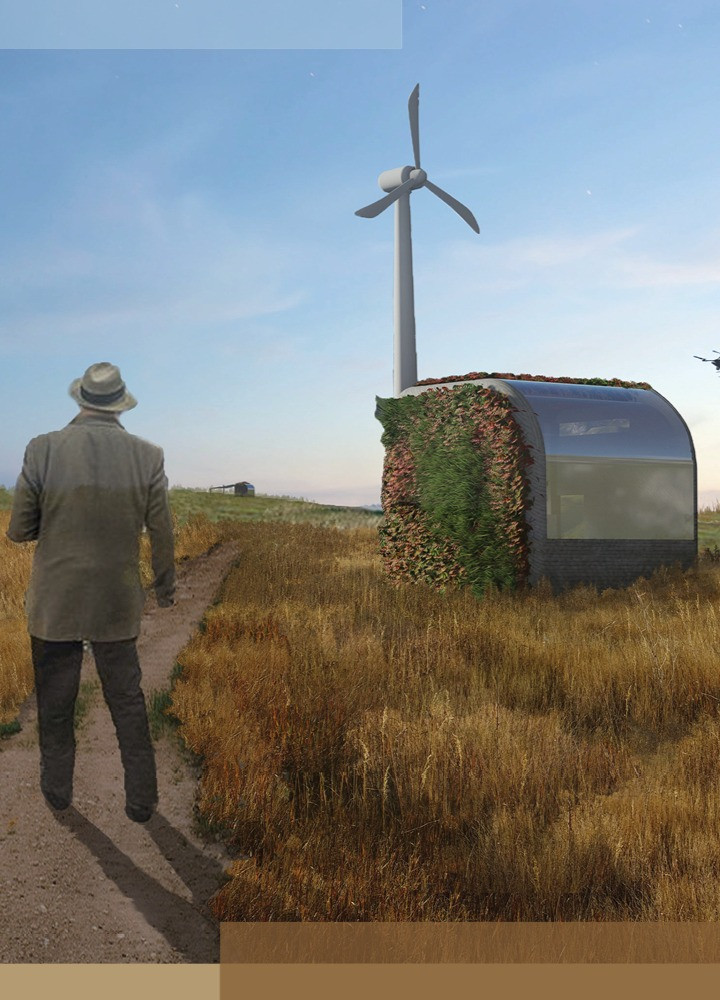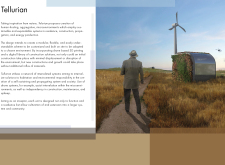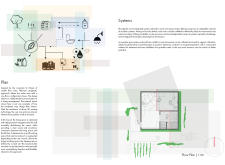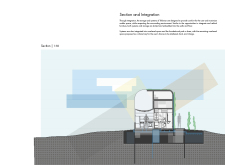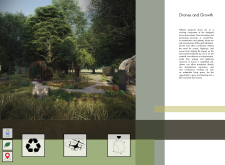5 key facts about this project
At its core, Tellurian is meant to serve as a flexible living space that accommodates varying needs and lifestyles. The architectural design features modular units that can be configured in numerous ways, allowing residents to personalize their environments. This inherent flexibility enables a seamless integration into different geographical settings, making it suitable for urban centers as well as rural locations. Each unit is designed to maximize functionality in a compact footprint while ensuring comfort and aesthetic appeal.
The fundamental aspect of Tellurian is its emphasis on sustainability. The project incorporates a range of environmentally friendly materials and systems. Employing biodegradable composites and recycled materials, the design minimizes the carbon footprint typically associated with traditional construction. Natural insulation materials such as hemp and wool contribute to energy efficiency, ensuring that the dwellings maintain a comfortable internal climate without excessive energy consumption. The use of photovoltaic panels taps into renewable energy, allowing each unit to generate its own power while promoting independence from non-renewable resources.
A notable aspect of Tellurian is its incorporation of holistic systems designed to manage resources effectively. The project features advanced water management systems, including rainwater harvesting and greywater recycling. This ensures that residents have access to necessary water sources while reducing reliance on external supply chains. The architecture takes advantage of passive design principles for thermal regulation, utilizing natural ventilation to minimize the need for mechanical cooling or heating.
The project’s architectural designs reflect a commitment to integrating innovative technology within the living environment. 3D printing plays a pivotal role in the construction process, allowing for quick adaptability and customization of both structural elements and interior features. Drones are integrated into the maintenance and logistical facets of the project, ensuring that construction is efficient and less disruptive to the local environment. This forward-thinking approach not only streamlines the building process but also aligns with the project's overarching goals of sustainability and efficiency.
Community interaction is another focal point of Tellurian. Each modular unit is designed to be part of a larger community framework that encourages social interaction and collaboration among residents. The landscaping surrounding the dwellings incorporates local flora, creating a biodiverse environment that supports local ecology. Communal spaces foster connections and promote a sense of belonging, reinforcing the notion that living in Tellurian is not just about the individual, but about establishing relationships and networks within the greater community.
Tellurian's unique design approaches set it apart from conventional housing projects. Its modularity allows for future adaptability, as residents can modify their living spaces based on changing needs without significant reconstruction. The integration of sustainable practices throughout the design process highlights a growing awareness of environmental responsibility within the field of architecture. Furthermore, the emphasis on technology reflects a recognition of the role that innovation plays in contemporary society.
In summary, Tellurian offers a compelling architectural response to modern living challenges, combining ecological awareness with community-enhancing elements. The project stands as an example of how architecture can morph to meet the needs of both people and the environment. By exploring the architectural plans, sections, designs, and ideas presented within the project, readers can gain deeper insights into its multifaceted approach to sustainable living. For those interested in understanding the extensive workings and innovative concepts that underpin Tellurian, a detailed exploration of the project presentation is highly encouraged.


